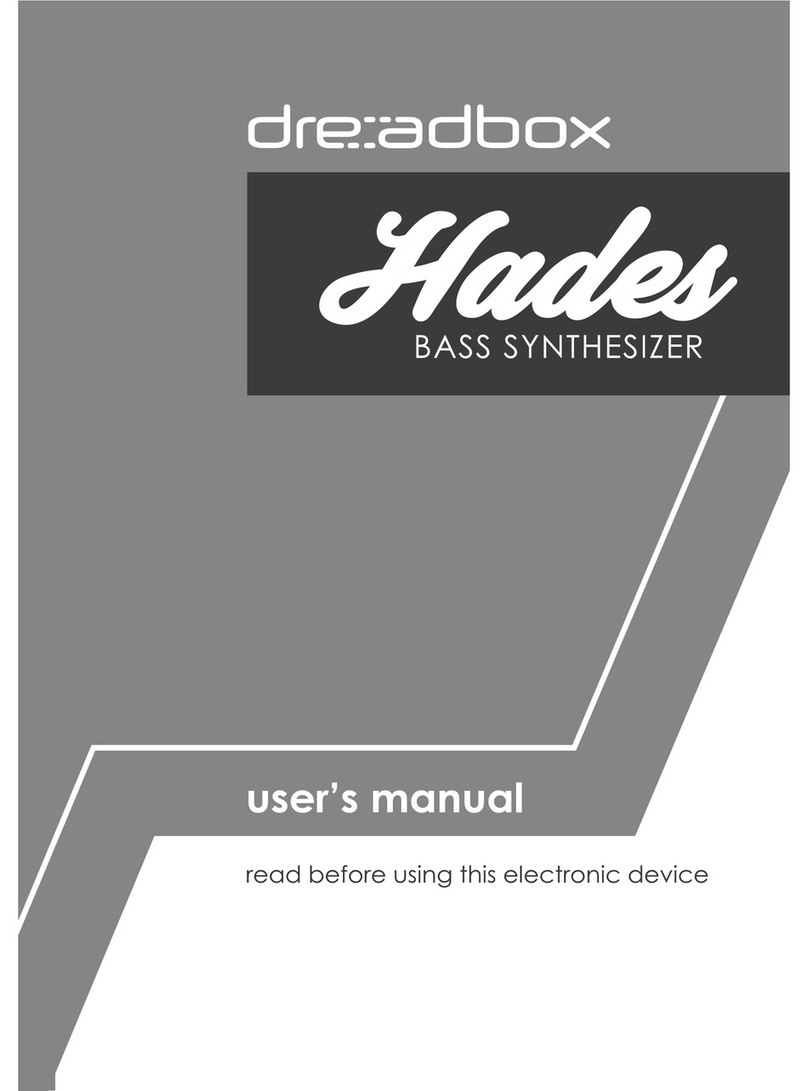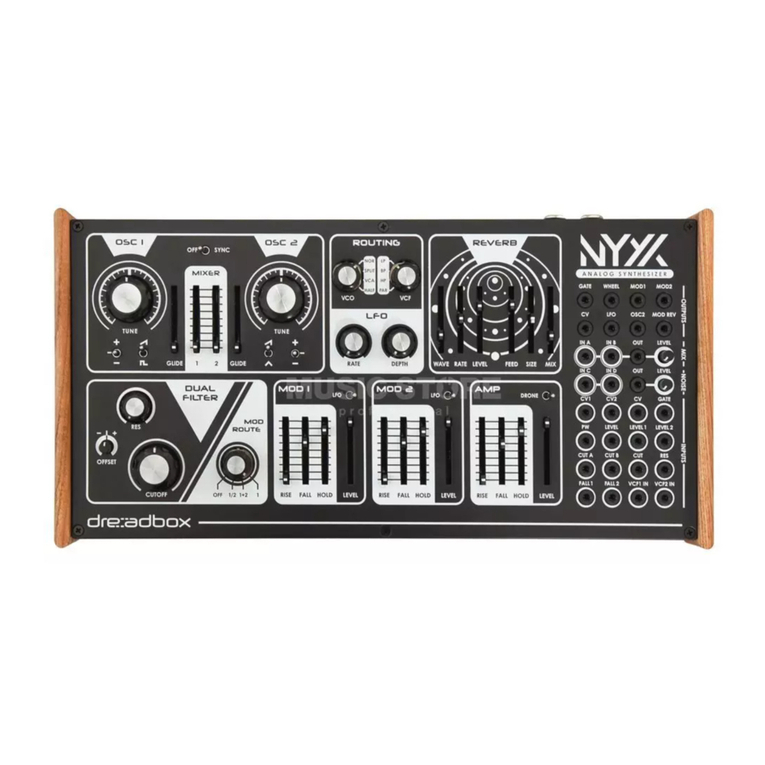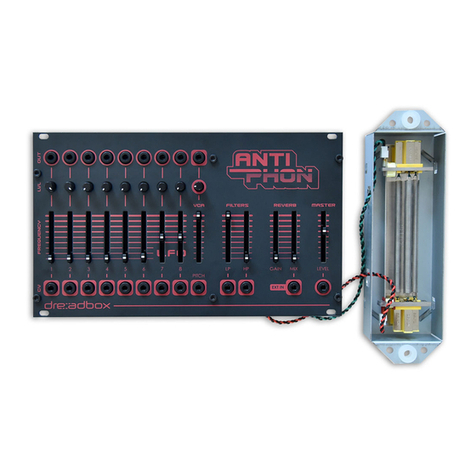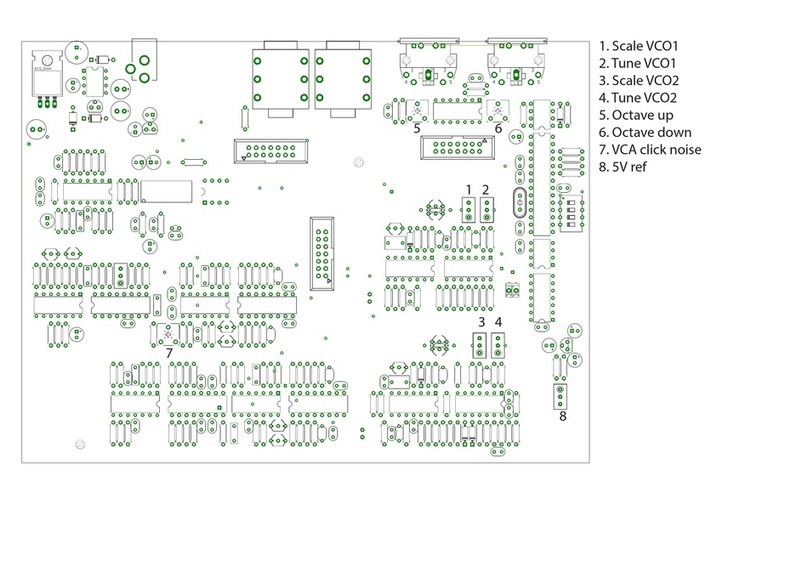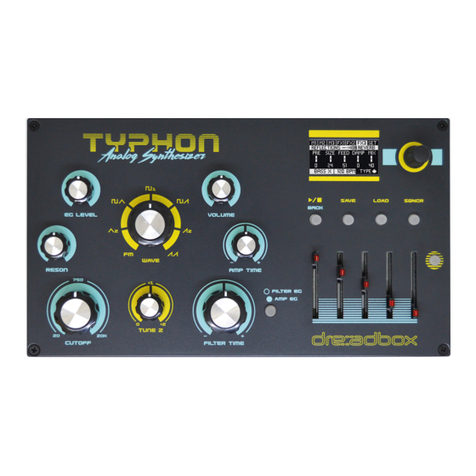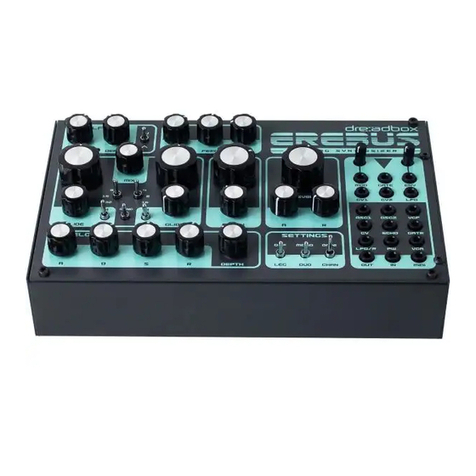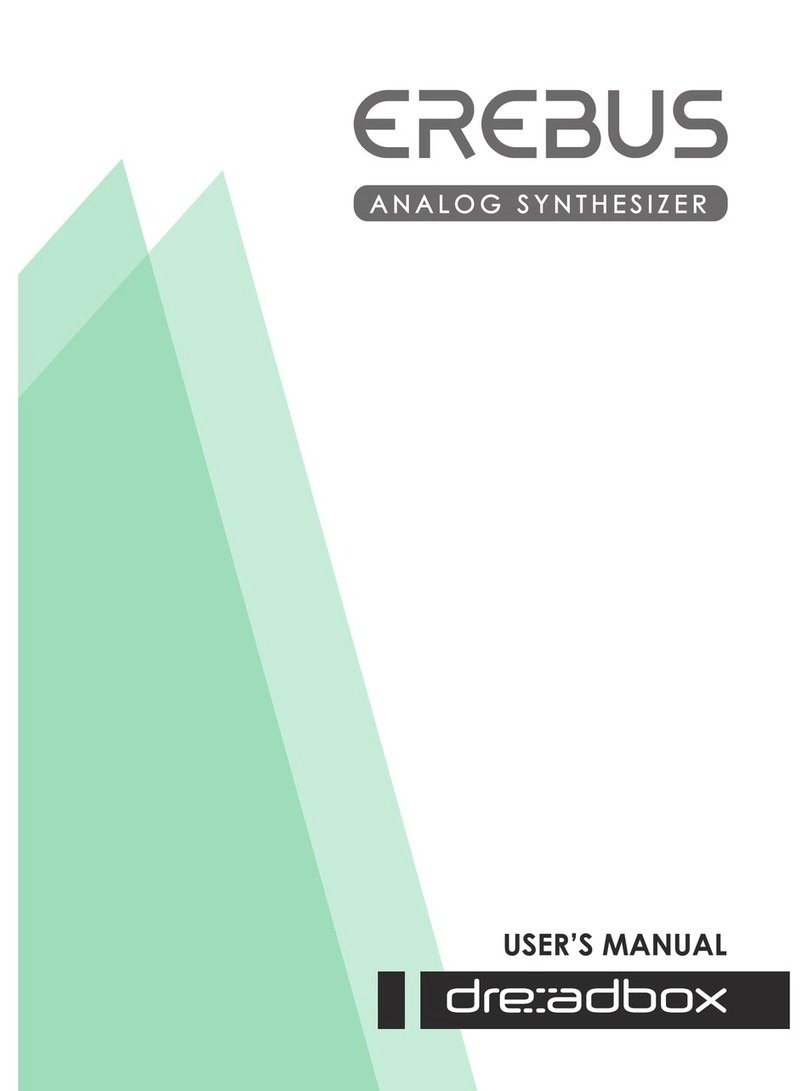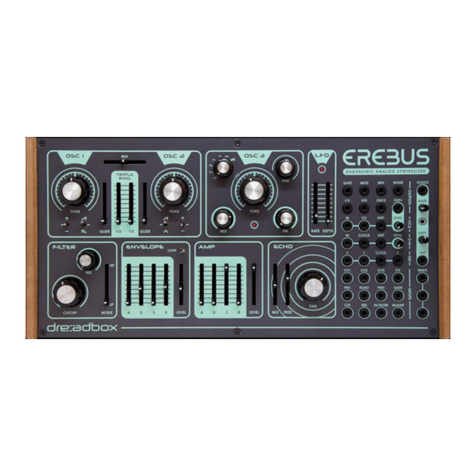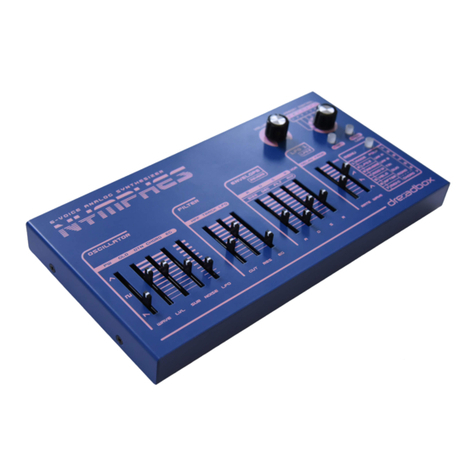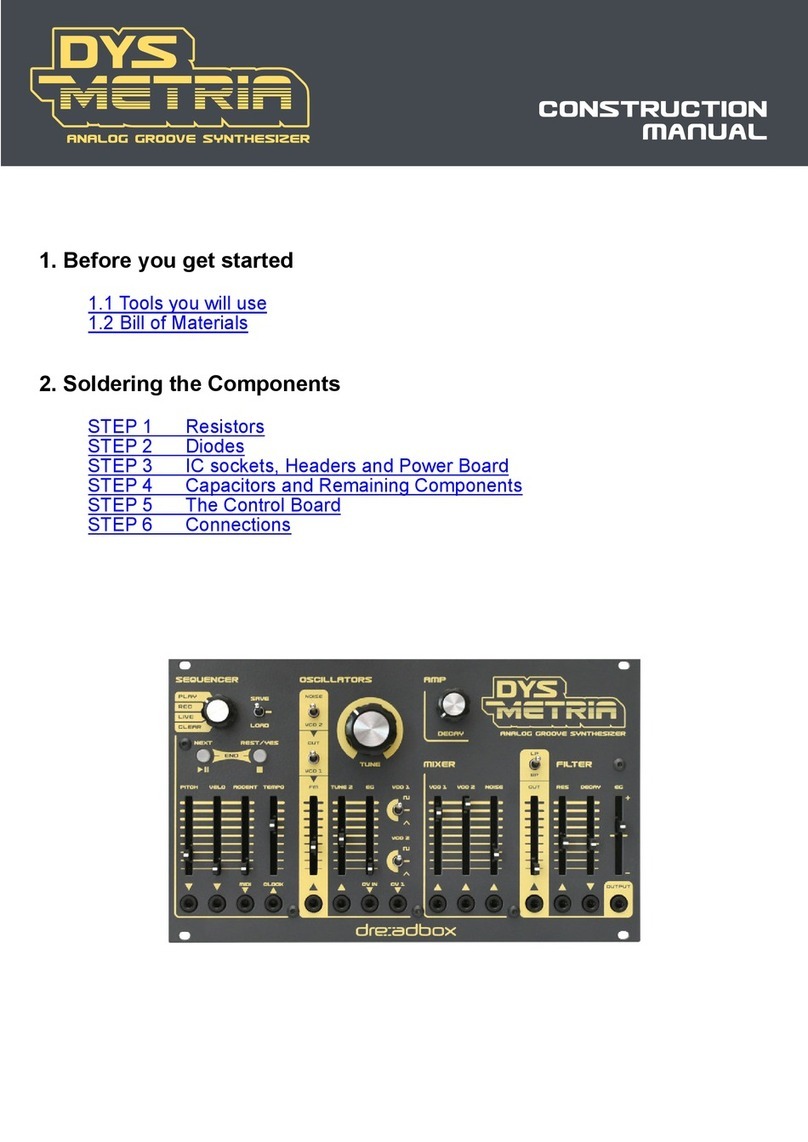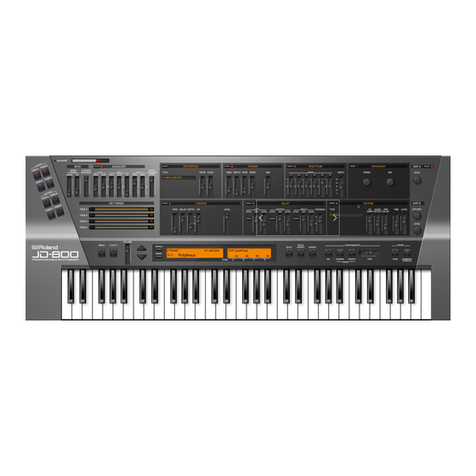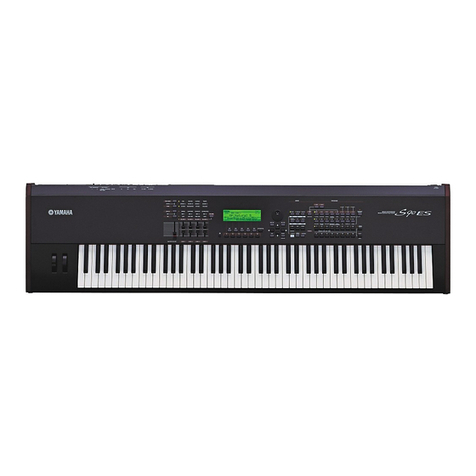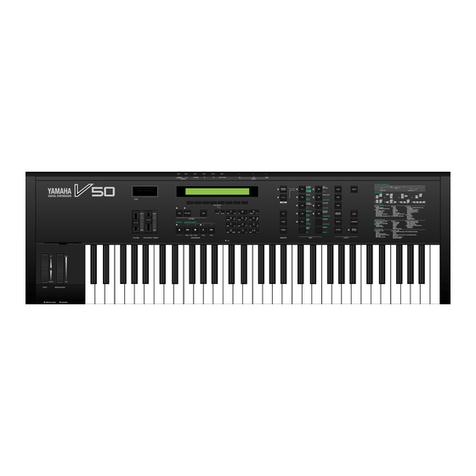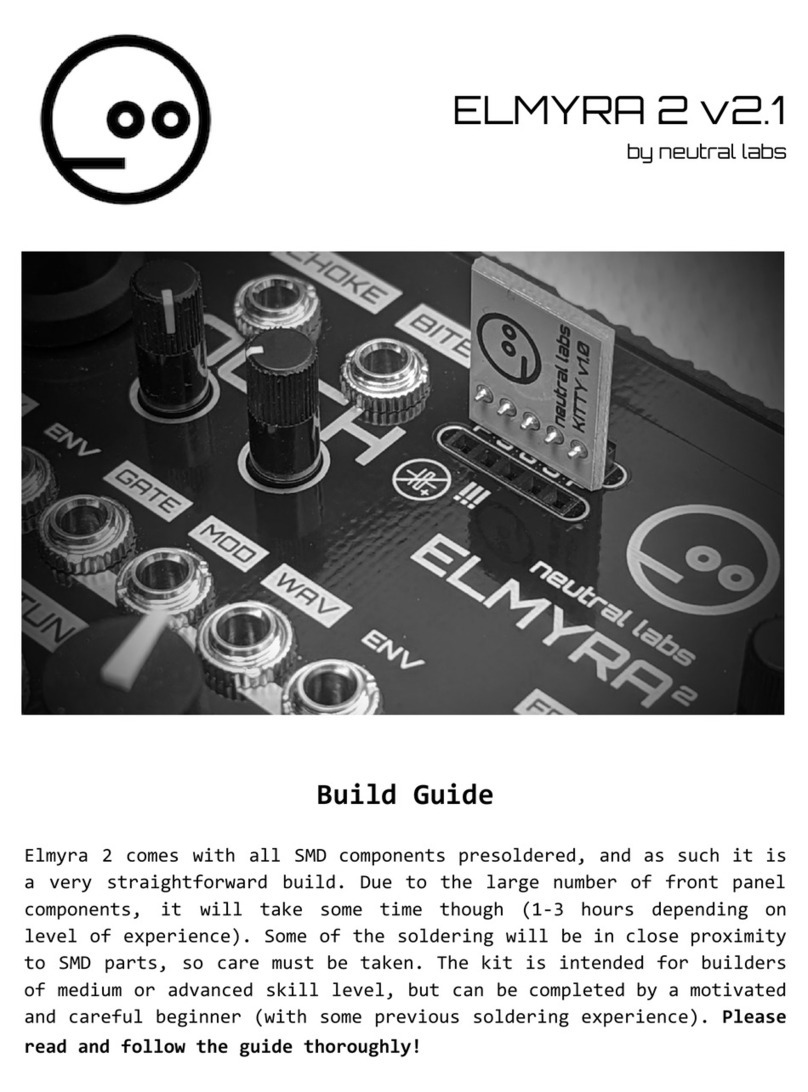
Step 7 - Tuning
This is the most challenging part of the build.
First thing you should do, is to prepare your
workbench. Make sure that your working area is all
cleaned up and we strongly suggest to use the foam
to support the module.
1. Connect a patch cable from the 1v/OCV output.
2. Use the crocks to connect the multimeter with the
minijack as shown. The red goes to the tip and the
black goes to the ground. Then turn the multimeter
on to the DC voltage measurement.
3. Connect the module to a USB power source.
IMPORTANT NOTE: To enter the calibration mode
you must ip the OMNI/CHAN switch 6 times in the
rst 10 seconds that the unit is powered.
4. After entering the calibration mode :
- Set A, D/R and S knobs (from the Envelope) to
about 50% travel.
- Set the LEG/OFF switch to the OFF position
- Flip the DR/R switch until the multimeter shows
about 0V.
- Now ip the DR/R switch again.
- The multimeter will show a measurement of about
3volts. Use the “A” knob to set it as close as possible
to 3 volts. The ideal voltage is 3.000mV (3V =
3000mV) but that is not always possible. You can
allow a 0,010 offset with no problems.
- Then ip the DR/R again. The multimeter will show
about 6 volts. This time use the D/R knob to set it to
6.000 volts.
- Then ip the DR/R switch one last time. The multi
meter will show about 9 volts. Use the S knob to set
it to 9,000.
IMPORTANT NOTE: After setting it up make sure not
to touch these knobs again while in calibration
mode, because the setting will be lost and you will
need to run the process again.
